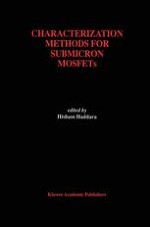1995 | OriginalPaper | Buchkapitel
Deep Level Transient Spectroscopy (DLTS)
verfasst von : Peter McLarty
Erschienen in: Characterization Methods for Submicron MOSFETs
Verlag: Springer US
Enthalten in: Professional Book Archive
Aktivieren Sie unsere intelligente Suche, um passende Fachinhalte oder Patente zu finden.
Wählen Sie Textabschnitte aus um mit Künstlicher Intelligenz passenden Patente zu finden. powered by
Markieren Sie Textabschnitte, um KI-gestützt weitere passende Inhalte zu finden. powered by
Many semiconductor defects manifest themselves through deep and shallow levels in the energy gap. Deep levels may act as electron or hole traps depending on their state of occupancy. Shallow levels are formed in semiconductor crystals when a foreign atom, which belongs to the groups of the periodic table closest to that of the semiconductor, is introduced into the lattice. These shallow levels are used to control the concentartion of holes or electrons in the semiconductor. They can be described by the effective mass theory of Kohn and Luttinger [1], giving a hydrogen like spectrum of the discrete levels with the binding energies E n , which can be written as: (4.1)$$ {E_n} = \frac{1}{{{n^2}}} {\frac{m}{{2h}}^{ * }}{\left( {\frac{{{q}}}{ \in }} \right)^2} $$ where m* is an effective mass for the electron or hole, 2208 is the static dielectric constant of the semiconductor, and n is an integer. For the ground state energies, better agreement between calculated and measured values are obtained using a more complicated pseudo-impurity theory developed by Pantelides [2].
